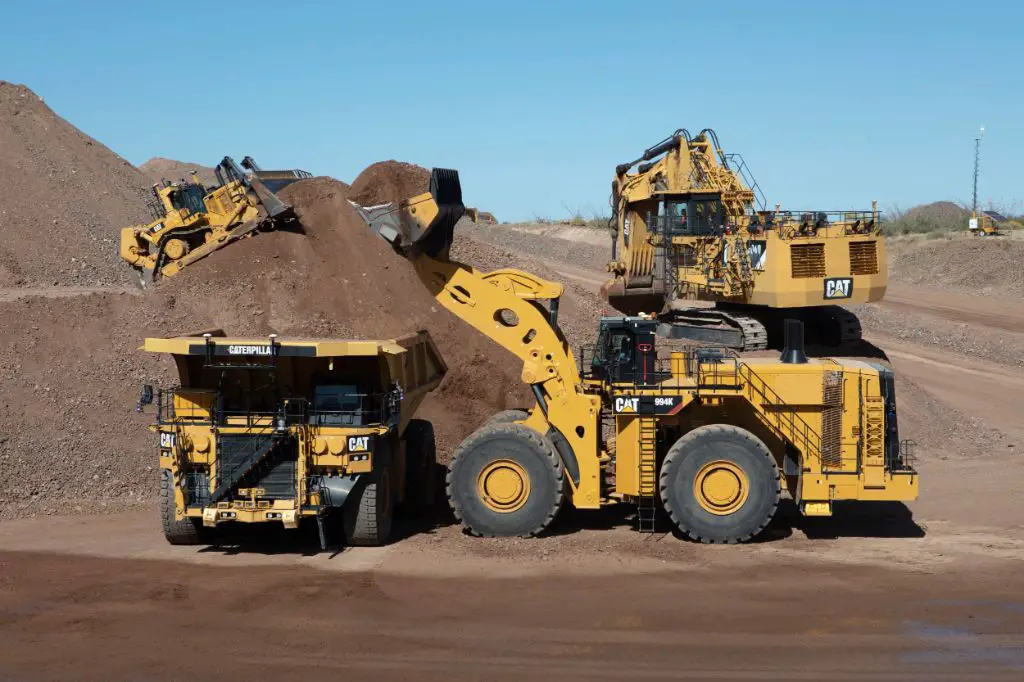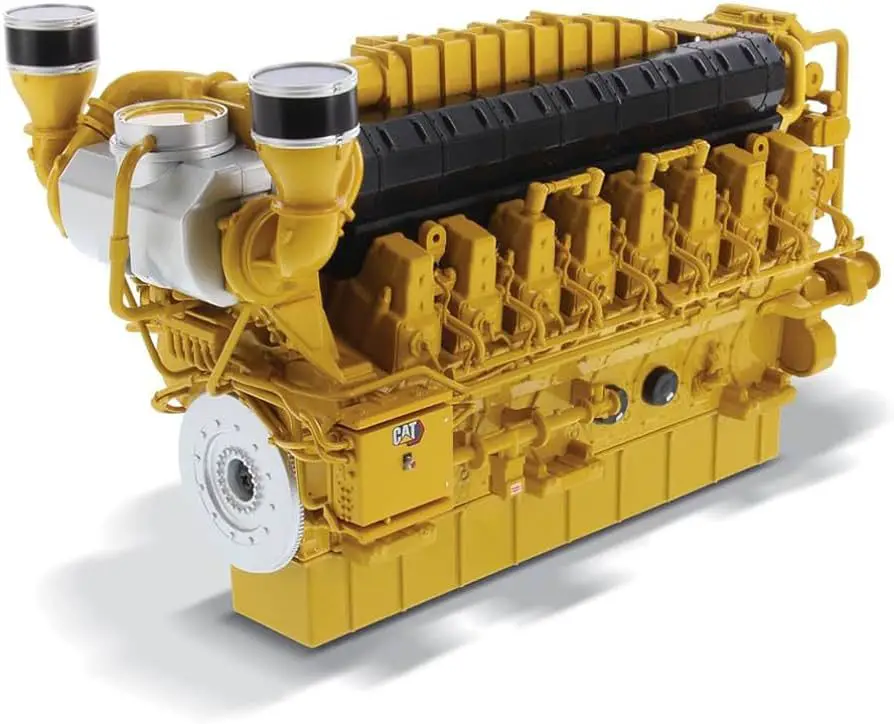Caterpillar has a long history of manufacturing truck engines. The company produced its first diesel engine in 1931 and started making truck engines in the 1950s. Over the decades, Cat truck engines have been used in a variety of on-highway vehicles including semi trucks, dump trucks, and buses. Cat established itself as one of the top suppliers of heavy-duty truck engines in the market.
However, in 2009, Caterpillar announced it was exiting the on-highway diesel engine market due to tough EPA regulations. For years, the company did not produce any truck engines as it focused on off-highway and industrial applications. But recently, Cat has re-entered the truck engine market, launching the CT13, a 13-liter engine for regional haul and vocational trucks in 2021. The CT13 engine marks the revival of Caterpillar truck engines after over a decade gap. The company plans to expand its truck engine portfolio going forward.
Caterpillar’s Current Truck Engine Offerings

Caterpillar currently offers two main truck engine models for Class 8 trucks, the CT13 and CT15. The CT13 is a 12.9 liter engine that delivers up to 500 horsepower and 1,850 lb-ft of torque. It utilizes a high pressure common rail fuel system and a Variable Geometry Turbocharger (VGT) for optimal performance across all engine speeds. The CT15 is a 15.2 liter engine that delivers up to 625 horsepower and 2,150 lb-ft of torque. It features the same fuel and turbocharging systems as the CT13.
Both the CT13 and CT15 meet the latest EPA emissions standards and are designed for fuel efficiency. They utilize thermal management systems to optimize combustion and minimize emissions. The engines are built on a stiff block design with wet cylinder liners for durability. They also feature a two-piece articulated piston for lower friction.
Caterpillar offers several upgrades for the CT13 and CT15 including larger displacement packages, alternative governors, and cold weather options. They can be configured for vocational, mixed service, and long haul trucks from Class 8 OEMs like Peterbilt, Kenworth, Freightliner, and International.
The CT13 and CT15 exemplify Caterpillar’s focus on providing reliable, efficient engines with leading horsepower and torque for the demanding needs of the trucking industry. They combine proprietary systems with innovative designs to deliver maximum performance and durability.
Advantages of Caterpillar Truck Engines
Caterpillar truck engines are known for their durability, reliability, and fuel efficiency. According to Atlanta Diesel, one of the main advantages of Caterpillar diesel engines is the high quality manufacturing which ensures a long engine life. The durability of Cat engines allows them to accumulate high mileage without need for major repairs.
Caterpillar designs their truck engines for reliability, maximizing uptime for the operator. Key features like a seamless fuel system, simplified air management, and electronic architecture contribute to consistent performance and minimal downtime. Operators can depend on Cat engines to start up and keep running in tough conditions.
In terms of fuel efficiency, Cat continues to develop proprietary technologies like dynamic gas blending that optimize combustion while lowering emissions. Their focus on fuel economy helps reduce operating costs for truckers over the lifetime of the engine. Cat’s Advanced Diesel Engine Management system is another innovation that maximizes fuel efficiency across diverse conditions and duty cycles.
Caterpillar’s Market Share
Caterpillar has long been a dominant player in the heavy duty truck engine market. According to sources, Caterpillar’s truck engine market share was 23% in 1997. After launching their ACERT technology in 1998, Caterpillar saw significant gains in market share over the next few years.

By 1999, just two years after the ACERT launch, Cat’s share of the North American heavy duty truck engine market had jumped to 30.4% according to this source. Another report confirms their 30.4% market share in 1999, up from 23% two years prior.
Caterpillar continued to increase their share over the early 2000s. By 2004, Cat commanded 36% of the heavy duty truck engine market in North America according to industry estimates. Their ACERT technology and reputation for reliability allowed them to take share from competitors even during tough emissions regulation changes in the 2000s.
Caterpillar’s Manufacturing Facilities
Caterpillar operates several manufacturing facilities around the world that produce truck engines. Some of the main locations include:
The Caterpillar engine manufacturing facility in Lafayette, Indiana opened in 2010 and produces Cat truck engines including the CT13, CT15, and CT660 models (Caterpillar). This 1.2 million square foot plant employs around 2,500 people.
The Morton, Illinois plant opened in 2012 and produces Cat on-highway truck engines including the CT13 and CT15. This 650,000 square foot facility employs over 700 people (Caterpillar).

Caterpillar’s engine manufacturing facility in Ponta Grossa, Brazil produces truck engines for South American markets including the Cat CT13 model (Caterpillar Truck Engines).
These modern plants utilize lean manufacturing techniques and advanced machining technology to produce reliable, durable Cat truck engines.
Caterpillar’s Innovation
Caterpillar is known for its pioneering innovation in heavy machinery and engines. When it comes to truck engines specifically, Cat continues to develop new technologies to improve performance, efficiency, and sustainability.
Most recently, at CONEXPO 2023, Caterpillar unveiled its new 13-liter diesel engine platform called the Cat C13D [1]. This engine was designed from the ground up to achieve best-in-class power density, as well as to meet Tier 4 emissions standards without the need for exhaust aftertreatment. Key innovations include a 2-stage turbocharging system, hydraulic lash adjusters, and targeted piston cooling.

Caterpillar has invested heavily in developing autonomous and remote controlled mining trucks over the past few decades. They ran the first prototype autonomous 777C trucks back in the mid 1990s [2], showcasing their forward-thinking approach to innovation.
At their technology and innovation division, Cat continually researches and develops new technologies focused on automation, connectivity, electrification, and alternative fuels. These innovations in areas like battery-electric drivetrains and hydrogen combustion aim to provide sustainable truck engine solutions well into the future [3].
Caterpillar’s Major Competitors
Caterpillar faces stiff competition in the truck engine market from other major brands like Cummins and Detroit Diesel. Cummins is one of Caterpillar’s biggest competitors, offering a wide range of diesel and natural gas engines for medium and heavy duty trucks. Cummins has a strong reputation for reliability and fuel efficiency. Detroit Diesel, owned by Daimler Trucks, is another leading brand with a long history in the truck engine market. Their DD platform of engines are popular choices for class 8 trucks. While Caterpillar maintains a significant market share, brands like Cummins and Detroit Diesel continue to compete aggressively on technology, performance and total cost of ownership.
The Future of Caterpillar Truck Engines
Caterpillar has an exciting roadmap for the future of its truck engine business. At the recent CONEXPO 2023 construction trade show, Caterpillar unveiled its new 13-liter engine platform, the Cat C13D, which provides a glimpse into Cat’s strategic vision for truck engines going forward (1).
The C13D leverages a new core engine architecture that will enable Caterpillar to readily develop natural gas and hydrogen capabilities in the future, demonstrating the company’s commitment to alternative fuels (2). Caterpillar states that the C13D is designed for the next generation of truck applications, with a compact size, streamlined installation, and flexibility to meet various emissions standards globally (3).
The company positions the C13D as an engine that will deliver reliability, durability, and efficiency well into the future. Cat notes that the C13D architecture will allow for ongoing enhancements to meet customer needs through 2040 and beyond (1). This shows Caterpillar’s long-term roadmap for its truck engine business.
In summary, with advanced new platforms like the C13D, Caterpillar aims to remain an innovative leader in truck engines for years to come, with the ability to adapt to alternative fuels and evolving regulations globally.
Caterpillar Truck Engines in Popular Culture
Caterpillar’s truck engines have made appearances in popular culture over the years. For example, caterpillar truck engines are referenced in several country music songs. In “18 Wheels and a Dozen Roses” by Kathy Mattea, she sings “I got an old Ford truck and a Caterpillar diesel”. Merle Haggard’s song “Rainbow Stew” also references caterpillar truck engines with the lyrics “I got my caterpillar crawling up the hill”.

Caterpillar truck engines have also made appearances in Hollywood films. The 1975 road thriller “White Line Fever” prominently featured a Kenworth W900 truck powered by a Caterpillar diesel engine. More recently, a Peterbilt truck equipped with a Caterpillar C15 engine appeared in the Pixar movie “Cars” (2006). The durable and reliable nature of Caterpillar truck engines makes them a popular choice for portraying big rigs in movies and TV shows.
Beyond music and film, Caterpillar truck engines also occasionally show up in literature and video games. Overall, the iconic Caterpillar brand is widely recognized, and references to their truck engines in popular culture serve as a testament to their reputation and status as an industry leader.
Conclusion
In summary, Caterpillar continues to be a dominant player in the truck engine market. Their engines are known for their reliability, fuel efficiency, and durability – key factors for trucking companies looking to optimize their operations. Even with competition from other major engine manufacturers like Cummins and Detroit Diesel, Caterpillar has maintained a strong market share over the years.
Caterpillar’s truck engines will continue to power long-haul trucks that transport goods across the country. Their commitment to innovation and meeting increasingly strict emissions standards ensures their engines will meet the needs of the future. With over 90 years of experience in engine manufacturing, Caterpillar has cemented their reputation as a trusted and leading producer of truck engines.
While the trucking industry will continue to evolve, with trends like electrification on the horizon, the internal combustion engine still has an important role to play. Caterpillar’s proven truck engines will provide the power and performance the industry needs as it transports essential freight across America’s highways.

